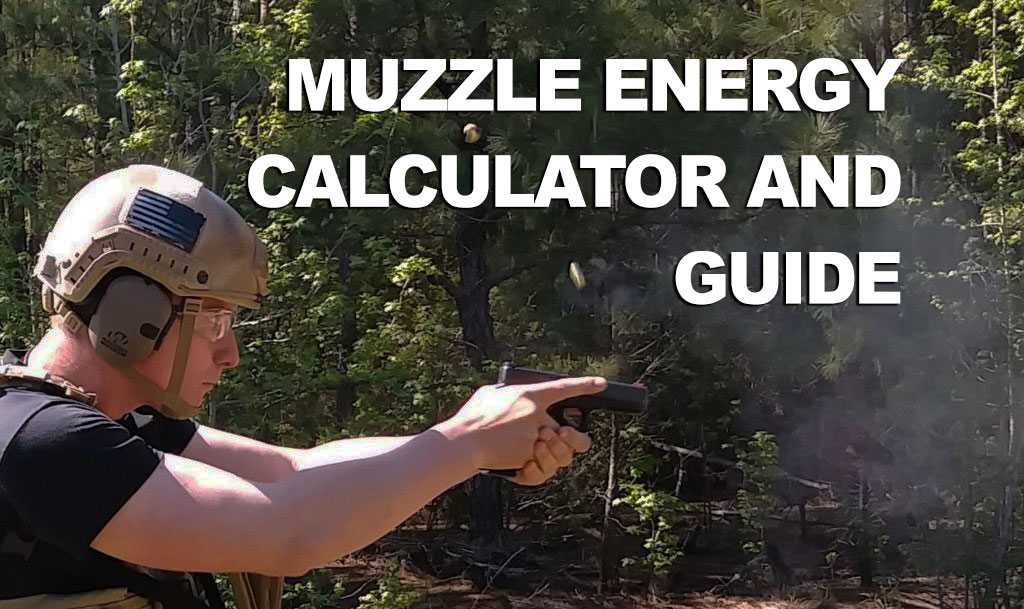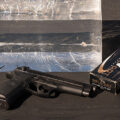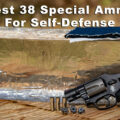As gun people, we often become obsessed with ballistic data, particularly with energy and velocity. It’s easy to understand why we get so deep into the numbers. Muzzle velocity and energy are often stamped right on ammo packaging. Muzzle energy is a prime comparative figure and could be the reason you pick one load over another. In this guide, we’ll examine why muzzle velocity is important and how you can use it to be a more effective hunter and more prepared self-defense shooter.
Few people completely understand the math necessary to calculate muzzle energy. However, it’s nice to have solid data when you’re scrolling through a website trying to choose the best ammunition option; It’s hard to argue with numbers, after all.
Defining Muzzle Energy
So what is muzzle energy all about and why should you care about a calculator that helps you determine it?
Muzzle energy is the amount of energy a bullet carries right out of the barrel. This number can be used to get a rough idea of a round’s destructive potential. The heavier the bullet and the faster it moves, the higher its muzzle energy.
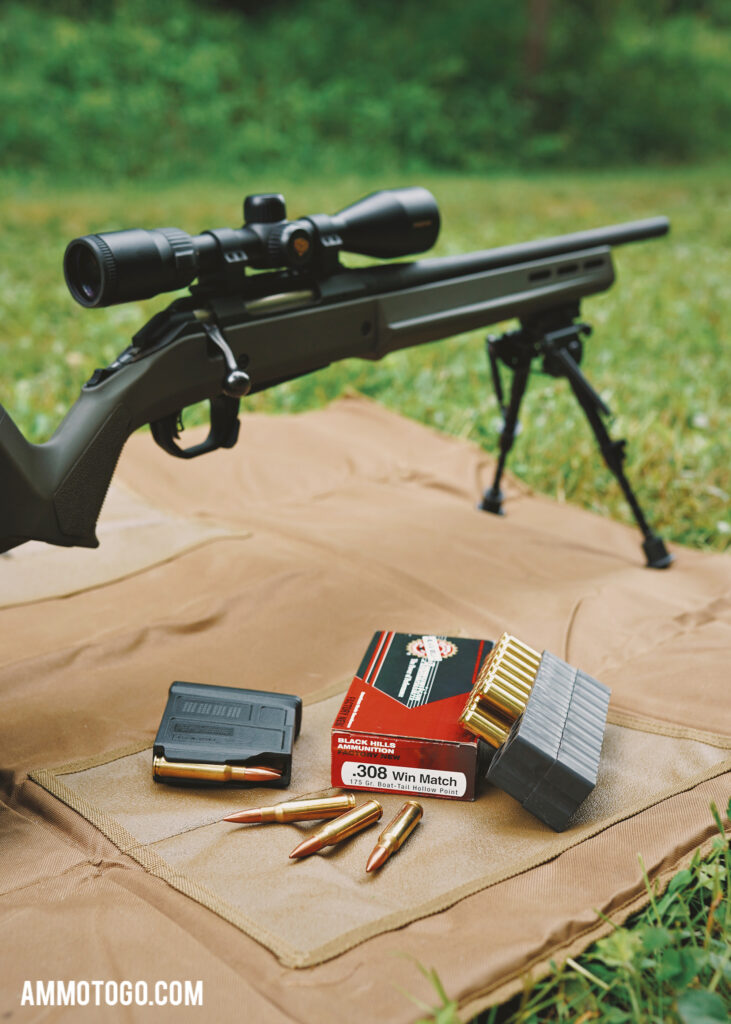
The more complicated answer: Muzzle energy is the measure of kinetic energy a projectile carries when it exits a firearm. If you can stretch your memory back to high school science, you should remember that kinetic energy is the energy of motion. If an object is moving, it has kinetic energy. In fact, the faster an object is moving, the more kinetic energy it has.
Muzzle Energy Calculation
You can calculate kinetic energy using the classic formula you memorized in Physics class. Here it is for those of us who have long since forgotten:
KE = 0.5 • m • v2
where m = mass of object
v = speed of object
To translate for the less mathematically inclined, “kinetic energy equals one-half the mass of an object times the square of its velocity.”
The velocity of a projectile plays an important role in the amount of kinetic energy it carries. For example, if you double the velocity of a projectile, the muzzle energy doesn’t just double, it quadruples. To understand this, think about how hard a baseball would hit you when tossed by a four year-old versus its impact when pitched by Randy Johnson. It’s the same projectile, but the speed it travels greatly affects the energy it carries at impact. That’s how velocity affects muzzle energy.
Measuring Muzzle Energy
When we talk about muzzle energy, it is typically measured in foot pounds. Foot pounds is a standard unit of energy used as part of the English Engineering Units, a set of measurements commonly used in the United States. One foot pound (sometimes written as ft-lb) translates to the amount of kinetic energy it takes to move a one-pound object one foot.
In old westerns, we often see kinetic energy exaggerated as the bad guy flies backward after being shot. While this seems logical when you look at the numbers, the reality is very different. Even if a cartridge generates 1000 foot pounds of energy, not all of that energy is used to push the target. Some radiates out from the projectile, sending ripples of energy through soft tissue, rather than using all of its force to knock the bad guy backwards into that watering tough or stack of conveniently placed barrels.
Stopping Power vs. Muzzle Energy
Gun publications and avid shooters can run on endlessly about the energy of certain cartridges and even specific brands of cartridges. Muzzle energy is often used to rate the lethality of certain loads. Many gun people will even use the term interchangeably with “stopping power.” But is muzzle energy important?
Yes and no.
There’s a lot going on with ammunition. It’s far more complicated than high school math, even if that sometimes feels like the most complicated thing on planet Earth. “Stopping power” has plenty more factors than simple kinetic energy.
What is the Concept of Stopping Power?
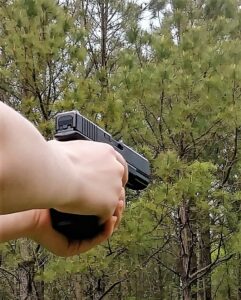 If we are talking about self-defense loads, stopping power is more accurately described as how effectively the round terminates a deadly threat.
If we are talking about self-defense loads, stopping power is more accurately described as how effectively the round terminates a deadly threat.
In hunting terms, stopping power more accurately refers to killing an animal as quickly and humanely as possible. Believe it or not, these are two very different things.
If you are a hunter, you’ve probably shot an animal that didn’t drop in its tracks. Chances are good that you’ve had to follow a blood trail before recovering game. Although we don’t always like it, a hunter can shoot an animal and let it run off a short distance to expire.
Self-Defense vs. Hunting Purposes
Shooters in self-defense situations don’t have this luxury. The goal of an armed citizen is to stop an attacker as quickly as possible. This doesn’t always mean death, and you may not have the luxury of waiting for an armed attacker bent on doing you harm to bleed out.
Causing immediate death with any firearm is difficult and there certainly needs to be an amount of luck on the shooter’s side, especially with the adrenaline and chaos that go with a dynamic situation. This is why soldiers and police officers are trained to aim for center mass, it increases hit probability even though an instant kill is highly unlikely.
Death comes when the brain is deprived of oxygen. For a game animal or a human attacker to die, there must be sufficient blood loss, usually through significant damage to the vascular system or a major blood-bearing organ.
Any bullet that even nicks a vital blood vessel will do the trick. However, death can take anywhere from 10 seconds to a full hour depending on how fast they bleed. If you’ve hit a deer, you can give him ample time to lay down and bleed, tracking a blood trail as necessary.
In a self-defense situation, things tend to happen faster. In just a few seconds, an attacker can carve you up like a Christmas ham and leave you bleeding in the street. That is why the concept behind the term “stopping power” is so important. Stopping the attacker is far more important than killing him. Although death may still come in the end, it isn’t the actual goal.
Where Does The Energy Go?
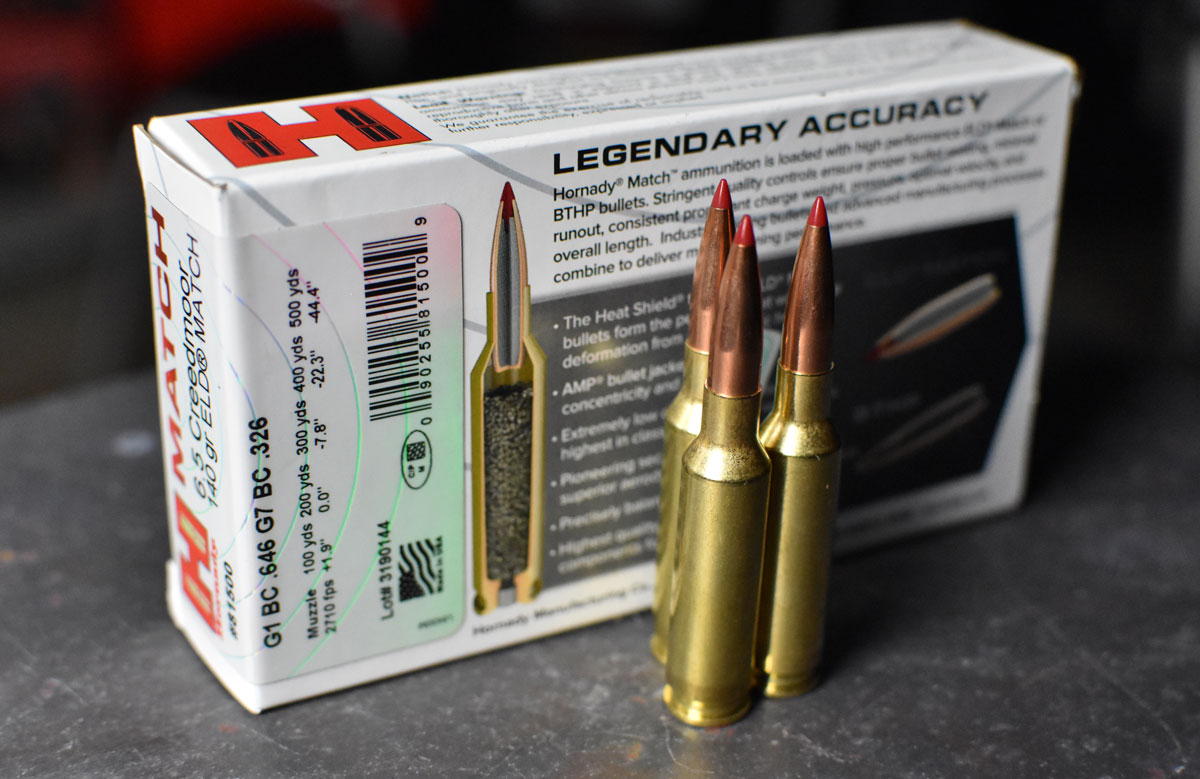
It is ironic in a way that ammunition manufacturers stamp muzzle velocity and muzzle energy on their product packaging. While a good indicator of raw performance, it only gives the consumer a vague idea of how effective that ammunition will be. These numbers only indicate projectile performance as it leaves the muzzle. What matters more is what the projectile does once it strikes the target.
Winchester’s “Train and Defend” line makes a perfect example. This system pairs range-ready “Train” rounds that are perfect for practice with “Defend” rounds engineered for terminal performance. The idea is to provide realistic training rounds that deliver the same shooting experience as self-defense rounds. The “Train” and the “Defend” ammunition produces the exact same muzzle energy and velocity. However, the “Train” rounds would be a poor choice for loading your concealed carry weapon.
The energy in Winchester “Train” rounds is sufficient to take down a threat in most defensive situations, the problem is where the energy goes. Topped with full metal jacket projectiles, Winchester’s training rounds plow through the target. While deep penetration is great for reaching vital organs, too much penetration can cause the bullet to pass completely through the target, taking that energy with it. This is the major problem with using FMJs for anything other than target shooting and recreational plinking.
On the other hand, Winchester “Defend” rounds are topped with jacketed hollow points. Designed to expand, hollow points slow as they move through soft tissue, dumping energy into the target rather than passing straight through. And the expansion does more than slow the progress of the projectile, it also carves a wider wound channel than a comparable FMJ, creating more damage and more blood loss.
Although shooters often argue over how much energy transfer actually matters, in a self defense situation that energy dump could be what stops a perpetrator.
How Barrel Length Impacts Muzzle Energy
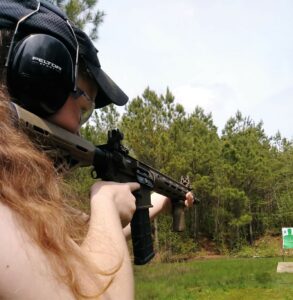 Muzzle energy isn’t something that can be measured with radar guns or impact targets. Instead, it is a rather ethereal figure that can only be computed using the previously mentioned formula. Because velocity has such a huge impact on muzzle energy, anything that affects velocity also affects energy exponentially.
Muzzle energy isn’t something that can be measured with radar guns or impact targets. Instead, it is a rather ethereal figure that can only be computed using the previously mentioned formula. Because velocity has such a huge impact on muzzle energy, anything that affects velocity also affects energy exponentially.
As the bullet travels down the barrel, propellant gases build pressure and accelerate the forward motion of the projectile. Once the bullet exits the barrel, the gases dissipate, pressure drops, and air resistance begins to slow the bullet. This is why velocity and energy generated at the muzzle will be the greatest over the course of the bullet travel path.
Generally speaking, the longer the barrel, the greater the muzzle velocity (and thus the greater the muzzle energy) because there is more length for pressure to build before the air creates drag.
Technically this is only true to a point. If the barrel is too long, the friction of the bullet against the interior wall of the barrel will overcome the pressure of the expanding gases, slowing the bullet rather than accelerating it. However, for this to occur, the barrel would have to be impractically long. So for existing firearms, longer barrels equal higher muzzle velocity and therefore increased muzzle energy.
Because the length of the barrel greatly affects both the velocity and energy generated at the muzzle, the figures touted by the manufacturer aren’t precise and certainly won’t be specific to your particularly firearm. However, that doesn’t mean real science and math weren’t used to come up with these numbers. Ballistic specifications for specific cartridges are based on measurements from tests performed using SAAMI specifications. Typically, manufacturers derive these numbers from data gathered using special ballistic test barrels. They perform the tests in a controlled laboratory environment. So, real world performance can vary greatly.
How to Use Muzzle Energy
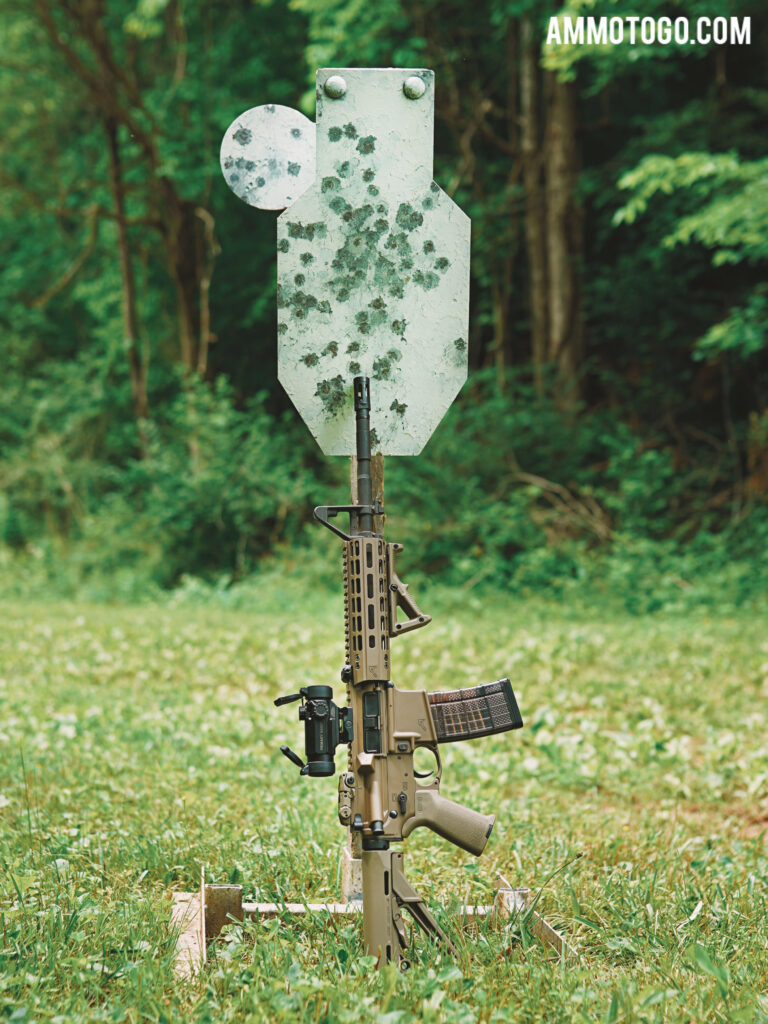
Muzzle energy isn’t exactly precise or the most important aspect of ammunition performance. But, it shouldn’t just be tossed aside. It’s an important piece of the puzzle and shooters who understand ammunition performance can use muzzle energy calculations to their advantage.
For self-defense shooters, knowing the muzzle energy of your practice ammunition and your personal protection loads is important. You want the specs of these two loads to match. This will make the feel and point-of-aim comparable. So, your practice shooting will be similar to what you will experience if you fire your weapon in a defensive situation.
For self-defense and hunting ammunition, muzzle energy is just part of the equation. Sure you want a hard-hitting round to ensure adequate energy transfer and penetration, but you also need to consider bullet design. A lot can happen between the muzzle and target impact. You should carefully consider weight retention and projectile expansion or fragmentation as well.
As always, it’s important to remember that at the end of the day there is no substitution for accuracy. A well-placed shot with less than stellar ammo is more effective on animals, whether fur bearing or criminal, than a poorly placed shot with the best performing ammunition on the market. So spend some time on the range and become proficient with your weapon of choice.
